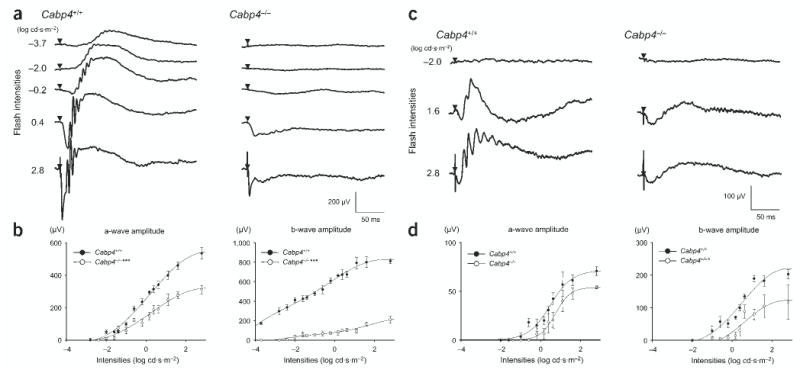Figure 6.

Single-flash ERG responses of increasing intensity for Cabp4−/− and Cabp4+/+ mice. (a,c) Serial ERG responses to increasing flash stimuli obtained from Cabp4−/− and Cabp4+/+ mice under (a) dark-adapted and (c) light-adapted conditions. Single-flash timing is indicated by the filled triangle. (b) Plotted ERG a-wave and b-wave amplitudes in response to increasing stimuli in Cabp4−/− mice showed significantly lower responses as compared with those in Cabp4+/+ mice in dark-adapted conditions (***P < 0.0001; n = 8). (d) The b-wave amplitudes in Cabp4−/− mice were also lower as compared with those in Cabp4+/+ mice in light-adapted conditions (*P < 0.01; n = 8) but the a-wave amplitudes showed smaller differences. Light-adapted responses were examined after bleaching at 1.4 log cd·m−2 for 15 min.
